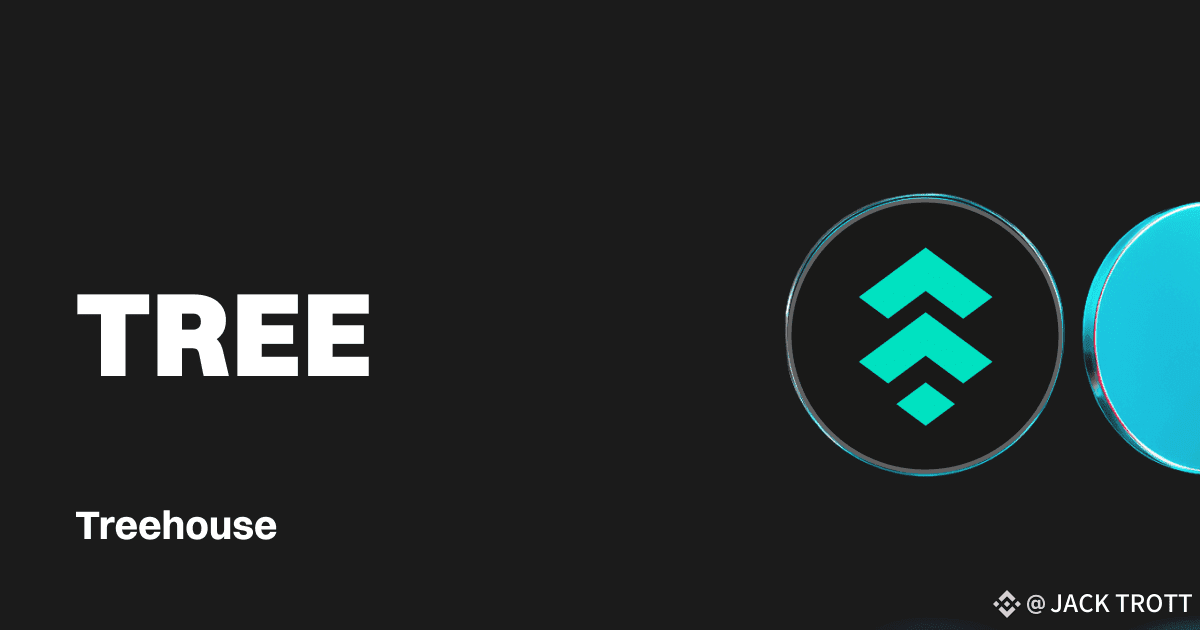If you’ve spent any time in DeFi, you already know the drill.
One week, your staking rewards look amazing. The next week, they’ve dropped so much you wonder if you’ve been rugged — even though you haven’t. Lending rates? All over the place. Liquidity pools? Great until market sentiment changes and yields vanish overnight.
For most of us, it’s a game of chasing numbers that just won’t sit still.
That’s the problem Treehouse Protocol wants to solve.
Built by Treehouse Labs, it’s a platform that’s trying to take the stability and structure of traditional fixed-income markets — the kind that power bonds, loans, and interest rate swaps in the real world — and bring them on-chain in a way that’s actually useful for everyday DeFi users.
Why This Matters
In traditional finance, investors and institutions have benchmark rates like LIBOR or SOFR. These are reliable, widely accepted numbers that everyone uses as the starting point for pricing loans, bonds, and other products.
DeFi doesn’t have that.
Instead, we’ve got dozens of different staking platforms and lending pools, each with their own rates, risks, and liquidity quirks. It’s like trying to run a business when every clock in your office tells a different time.
Treehouse’s solution? A transparent, decentralized benchmark that lives entirely on-chain — plus tokenized assets that lock in predictable yields while still letting you keep your funds liquid.
Meet DOR: The Decentralized Offered Rate
DOR is the beating heart of the protocol.
It’s a decentralized oracle that takes interest rate submissions from multiple independent participants, filters out the noise, and produces one clear, trustworthy number.
That number — the DOR — becomes the standard reference rate for all sorts of financial products: loans, bonds, forward rate agreements, even more exotic things like swaptions.
It’s like DeFi’s answer to the question: “So… what’s the real rate right now?”
Meet tAssets: Yield That’s Tokenized
If DOR is the brain, tAssets are the hands that get things done.
A tAsset — like tETH — is a token you get when you deposit your asset into Treehouse. It represents both your principal and a predictable stream of yield, powered by the protocol’s rate optimization engine.
The beauty? You’re not locked in. You can sell, trade, or use your tAssets as collateral in other DeFi projects. You get stability without sacrificing flexibility.
It’s fixed income — but with the freedom DeFi was supposed to give us all along.
The Secret Sauce: Interest Rate Arbitrage
Behind the scenes, Treehouse runs an Interest Rate Arbitrage Engine. It constantly scans staking and lending markets, moving funds to wherever they can earn the best rate.
When rates shift, the protocol rebalances automatically. You don’t have to lift a finger — and you don’t have to chase yields across six different dApps.
It’s like having a personal DeFi portfolio manager who works 24/7, never gets tired, and doesn’t panic-sell when the market dips.
The $TREE Token
$TREE is the native token that powers the ecosystem. Holders can:
Vote on governance decisions (think: what assets to support, what parameters to tweak)
Earn rewards for participating in the DOR system
Unlock certain product benefits by Staking
It’s part governance tool, part incentive mechanism, and part badge of belonging in the Treehouse ecosystem.
Who It’s For
Treehouse is designed for more than just crypto veterans.
Retail users can finally get predictable staking yields without locking up their funds forever.
Protocols & DAOs can use DOR as a standard reference rate for pricing their own loans or products.
Risk managers can build on-chain tools like FRAs and swaptions to hedge against interest rate swings.
But Let’s Be Honest — There Are Risks
Yes, Treehouse is promising, but it’s still DeFi. That means:
Smart contracts can have bugs.
Underlying asset yields can drop.
tAssets could temporarily de-peg from expected returns.
Oracles — even decentralized ones — can be attacked.
The team has brought in third-party auditors and built DOR to be manipulation-resistant, but nothing in crypto is completely risk-free.
Where It’s Going
Treehouse’s roadmap includes:
Launching more tAssets beyond ETH
Expanding to multiple blockchains
Introducing more fixed-income derivatives
Partnering with other protocols and staking providers to grow adoption
They’ve already listed the TREE token on major exchanges, which has boosted visibility and liquidity.
Why It Stands Out
Plenty of protocols offer yield farming or liquid staking. Some even provide rate oracles. But very few combine a decentralized benchmark rate with tokenized fixed-income products and wrap it all in an automated yield optimization system.
Treehouse is trying to be the fixed-income layer for Web3 — and if it works, it could quietly become one of the most important pieces of infrastructure in DeFi.
Final Take
Treehouse Protocol is what you get when you take the boring but dependable parts of traditional finance and reimagine them for the permissionless world of blockchain.
If you’re tired of chasing unstable APYs and just want to know what your money will earn, it’s worth keeping an eye on.
But remember — in DeFi, even the most solid-looking “treehouse” is still out in the open.
@Treehouse Official #Treehouse $TREE
